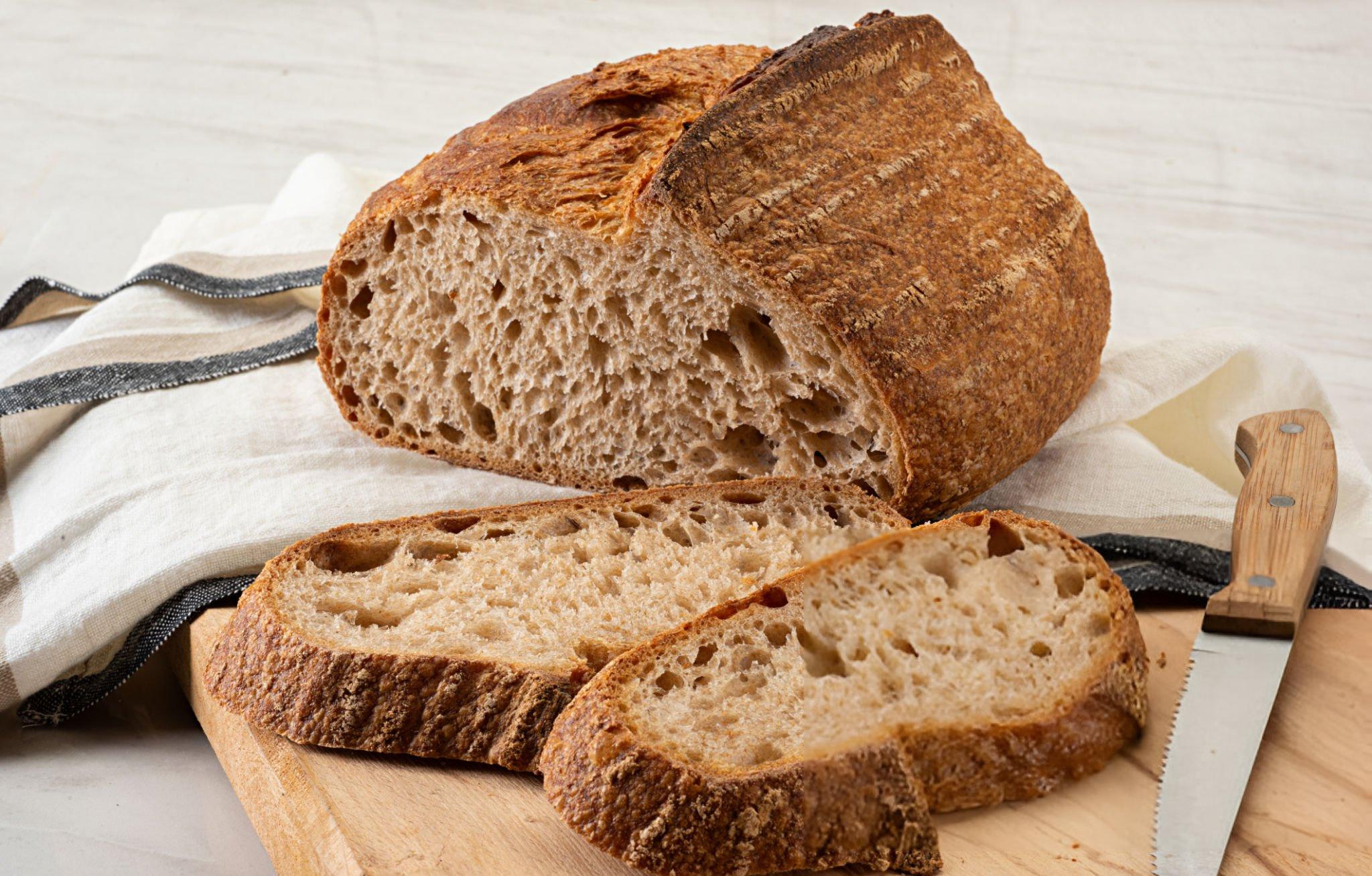
Italian Bread
This Italian bread recipe delivers a crusty exterior and soft interior, perfect for any meal. Simple ingredients, overnight fermentation, and Dutch oven baking make it easy and delicious!
Print
Pin
Servings: 16 Slices
Ingredients
- 600 grams 5 cups bread flour, measured by spooning and leveling
- 480 mL 2 cups/16oz room-temperature water
- 28 grams 2 Tbsp/1 oz softened or melted salted butter (or use oil as an alternative)
- 15 grams 2 1/2 tsp fine sea salt
- 1/2 tsp active dry yeast or instant yeast
Instructions
- In a large mixing bowl or the bowl of a stand mixer fitted with a dough hook, combine the bread flour, water, yeast, salt, and butter (or oil). Stir the mixture using the hook, a wooden spoon, or a Danish whisk until all the flour is fully incorporated, and a cohesive dough forms.
- Once the dough comes together, cover the bowl with a clean kitchen towel or plastic wrap and allow it to rest undisturbed for 30 to 60 minutes.
- After resting, wet your hands under cold water to prevent sticking. Using one hand, gently grasp one side of the dough, stretch it as far as it will go without tearing, and fold it over the center. Rotate the bowl 90 degrees and repeat the stretching and folding process on all four sides.
- Let the dough rest again for 30 to 60 minutes, then repeat the stretching and folding process as before. Once done, cover the dough and allow it to ferment at room temperature overnight, approximately 10 hours. Including the initial preparation time, the total fermentation period should be around 12 hours.
- By the next morning, the dough should appear bubbly and well-risen. Using a spatula or your hands, gently scrape the dough away from the sides of the bowl to deflate it. Transfer the dough onto a floured surface, handling it with care to maintain its structure.
- Gently stretch the dough into a rectangular shape without rolling it. Fold the top third of the rectangle downward toward the center, then bring the bottom third up to overlap, creating a letter-like fold. Starting from one of the short ends, roll the dough tightly into a ball. Pinch the sides to smooth out any creases, then roll it gently in your hands to create a taut, round shape.
- Prepare a large bowl by crumpling a sheet of parchment paper and placing it inside. Place the dough ball seam-side down into the bowl, cover it, and let it rise again for 60 to 90 minutes.
- While the dough rises, place a Dutch oven (with its lid) in the oven and preheat to 425°F (232°C).
- When the dough has risen sufficiently, it should feel airy yet spring back slowly when gently pressed. If it rebounds too quickly, allow more rising time. Lightly dust the surface with flour and score the dough using a sharp knife or bread scoring tool to create one deep slash and a few smaller ones for decoration and steam release.
- Carefully remove the hot Dutch oven from the oven. Using the parchment paper as a sling, transfer the dough into the Dutch oven. Be cautious to avoid deflating the dough. Slide a few ice cubes (about 3 to 4) under the parchment paper, placing them around the edges where the paper and pot meet.
- Cover the Dutch oven with its lid and bake for 15 minutes. Afterward, remove the lid and continue baking for an additional 20 minutes, or until the bread achieves a golden-brown crust.
- Once baking is complete, take the Dutch oven out of the oven and let the bread rest inside for 5 to 10 minutes. Carefully remove the bread and allow it to cool completely on a wire rack before slicing or serving.